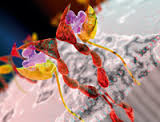The active pharmaceutical ingredient (API) market, traditionally dominated by small-molecule drugs, is currently witnessing a rapid shift towards biopharmaceuticals. At the same time, the manufacturing volume outsourced to contract manufacturing firms is on the rise. As plain vanilla generics continue to get highly competitive, API manufacturers are searching for newer avenues such as the production of high-potency APIs to differentiate themselves from competition.
API opportunities in biologicals, biosimilars and generics
Home/Pharma News
|
Posted 29/07/2009
 0
Post your comment
0
Post your comment
“It’s a difficult time for API manufacturers as they continue to battle challenges such as growing competition from low-cost countries and overcapacity. Market participants will increasingly have to rely on strategies such as capability differentiation and consolidation to stay ahead of competition,” observes Pharmaceutical & Biotechnology Programme Leader Sumanth Kambhammettu from Frost & Sullivan.
“Biological ingredients are providing the fastest growth in the API sector, outstripping their chemical counterparts two- to three-fold,” Mr Kambhammettu says. The market for biological APIs was worth US$7 billion (Euros 5 billion) in 2007, accounting for around 9% of the US$78 billion (Euros 56 billion) global market for APIs in that year. Biologicals are expected to grow at a rate of 12-15% a year to reach US$12 billion (Euros 8.6 billion) in 2011. During the same period small-molecule APIs will grow at 5% to 6%. Within biologicals, monoclonal antibodies and therapeutic proteins are the fast-growing segments, with cumulative annual growth rates of 14.6% and 15.9%, respectively, through 2011.
The increasing importance of biologicals also has a knock-on effect on contract manufacturing organisations (CMOs), as these products are currently largely manufactured in-house by drug makers because of the complexity of manufacturing processes and intellectual property concerns. Big pharma companies such as GlaxoSmithKline and Pfizer are restructuring manufacturing, scaling down small-molecule capacity and increasing investments in biologicals production, said Mr Kambhammettu. While that effort is providing some opportunities for CMOs, there is considerable overcapacity in the marketplace that will drive "considerable consolidation in contract manufacturers over the next five to seven years", he added.
For chemical APIs the big growth driver will be the continuing growth of the generic drug industry, which accounted for 45% of the revenues made by contract API manufacturers in 2007. That share is expected to increase to 52% by 2011 as generic sales expand in emerging pharmaceutical markets such as Asia-Pacific, Latin America and Eastern Europe. More opportunities for CMOs are expected to crop up in the biologicals space too as a result of big pharma's restructuring drive, both for innovative biologicals and biosimilars, Mr Kambhammettu said.
Source: Frost & Sullivan, Pharmafocus
Guidelines
New guidance for biologicals in Pakistan and Hong Kong’s independent drug regulatory authority
Canada poised to remove requirement for Phase III trials for biosimilars
Policies & Legislation
ANVISA tackles 24-month backlog in biologicals post-registration petitions
US EO: delivering Most-Favored-Nation Prescription Drug Pricing to American patients
Bio-Thera and Stada expand biosimilars alliance to include tocilizumab

Home/Pharma News Posted 20/10/2025
New denosumab and ustekinumab biosimilar launches in US, Canada and Japan

Home/Pharma News Posted 10/07/2025
Alvotech partnerships and acquisition: Dr Reddy’s, Advanz, Xbrane

Home/Pharma News Posted 30/06/2025
The best selling biotechnology drugs of 2008: the next biosimilars targets







Post your comment